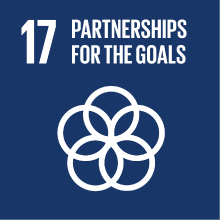HISTORY OF SOUTHEASTERN EUROPE
- Academic year
- 2025/2026 Syllabus of previous years
- Official course title
- STORIA DELL'EUROPA BALCANICA
- Course code
- LM5890 (AF:561831 AR:323361)
- Teaching language
- Italian
- Modality
- On campus classes
- ECTS credits
- 6
- Degree level
- Master's Degree Programme (DM270)
- Academic Discipline
- M-STO/03
- Period
- 1st Semester
- Course year
- 1
Contribution of the course to the overall degree programme goals
The historical nature of the course contributes to the multidisciplinary goals of the MA Degree Programme. Furthermore, its geographical focus on South-Eastern Europe constributes to the teaching programmes specifically conceived for MA students interested in deepening their knowledge about that area. The thematic focus on war allows to deepening the knowledge related to some historical issues and their legacy in the actual public debates.
Expected learning outcomes
- to familiarize with and to be able to understand the historical development of some wars and cases of collective violence
- to include South-East Europe in a comparative international context
- to become acquainted with the most recent historiographical debate around the course's issues
- to be able to apply this knowledge to a critical understanding of the present time
- to refine your communication skills
Pre-requirements
Guido Franzinetti, I Balcani: 1878-2001, Carocci, Roma 2006 (or later editions).
Francesco Guida, L’altra metà dell’Europa. Dalla Grande guerra ai giorni nostri, Laterza 2015, particularly pp. 33-84.
For a long-term perspective:
Egidio Ivetic, I Balcani. Civiltà confini, popoli (1453-1912), Bologna, il Mulino, 2020.
Armando Pitassio, Corso introduttivo allo studio della storia dell'Europa orientale, Perugia, Morlacchi Editore, 2011 (the parts about South-Eastern Europe).
Giulia Lami, Storia dell'Europa orientale. Da Napoleone alla fine della Prima guerra mondiale, Firenze, Le Monnier, 2019 (the parts about South-Eastern Europe).
Contents
- interpretative issues regarding violent phenomena: how did the public discourses about them evolve during the time
- to what extent war and violence, especially paramilitary violence, are intertwined with forms of state-building in the Balkans
- to what extent can we speak of specifically Balkan forms of violence
- how can this analysis be useful for a better understanding of the recent history of that region, in an international comparativ perspective
Referral texts
- Wolfgang Höpken, Performing Violence. Soldiers, Paramilitaries and Civilians in the Twentieth-Century Balkan Wars, in Alf Lüdtke, Bern Weisbrod (eds.), No Man’s Land of Violence. Extreme Wars in the 20th Century, Wallstein Verlag, Göttingen 2006, pp. 211-49.
- Xavier Bougarel, Hannes Grandits and Marija Vulesica (eds), Local Dimensions of the Second World War in Southeastern Europe, Routledge, London, 2019 (alcuni capitoli).
- Lynda E. Boose, Crossing the River Drina. Bosnian Rape Camps, Turkish Impalement, and Serb Cultural Memory, in “Signs”, xxviii, 1 (Autumn), 2002, pp. 71-96.
- Xavier Bougarel, Yugoslav Wars: The “Revenge of the Countryside” between Sociological Reality and Nationalist Myth, East European Quaterly, vol. XXXIII, n° 2, June 1999, pp. 157-175.
- Ivan Čolović, Campo di calcio, campo di battaglia. Il calcio, dal racconto alla guerra. L’esperienza jugoslava, Mesogea, Messina 1999 (pagine da definire).
- Beryl Nicholson, L’occupazione austro-ungarica di Mallakaster in Albania e le sue ripercussioni sulla popolazione civile (1916-1918), in Bruna Bianchi (a cura di), La violenza contro la popolazione civile nella Grande Guerra. Deportati, profughi, internati, Unicopli, Milano 2006, pp. 127-46.
- Petra Svoljsak, La popolazione civile nella Slovenia occupata, ivi, pp. 147-63.
- Bruna Bianchi, Gli stupri di massa in Serbia durante la prima guerra mondiale, in Marcello Flores (a cura di), Stupri di guerra. La violenza di massa contro le donne nel Novecento, Franco Angeli, Milano 2010, pp. 43-60.
- Karen Engle, Feminism and Its (Dis)contents. Criminalizing Wartime Rape in Bosnia and Herzegovina, in “The American Journal of International Law”, 99, 4 (October), 2005, pp. 778-816.
- Roy Gutman, david rieff, Crimini di guerra. Quello che tutti dovrebbero sapere, Contrasto-Internazionale, Roma 2003 (ed. or. 1999), alcuni lemmi.
- Wendy Bracewell, Rape in Kosovo. Masculinity and Serbian Nationalism, in “Nation and Nationalism”, 6, 4 (October), 2000, pp. 563-90.
Assessment methods
1. Group presentations (30 minutes max.) on a text in the syllabus.
The aim is to evaluate the oral communication skills, as well as the ability to work synergically with other students (10% of the final grade);
2. Written test (90% of the final grade)
The examination has three main goals:
1) to verifying the knowledge of the main historical facts and processes, as well as the most relevant personalities, with relation to the treated topics
2) to verify the analytical skills and the ability of the student to formulate critical reflections about the historiographical issues emerged during the lessons
3) to verify the knowledge of some elements of historical comparison in the framework of the East-Central and South-East European space.
The written examination (duration: 1½ hours) also aims at verifying the written communicative skills of the student.
For those who do not attend classes:
only the written examination (see above, point 2).
Personal notes are not admitted at the exam. It will be possible to make use of the academic literatures only during the first 5 min.
Type of exam
Grading scale
Teaching methods
Further information
2030 Agenda for Sustainable Development Goals
This subject deals with topics related to the macro-area "International cooperation" and contributes to the achievement of one or more goals of U. N. Agenda for Sustainable Development


